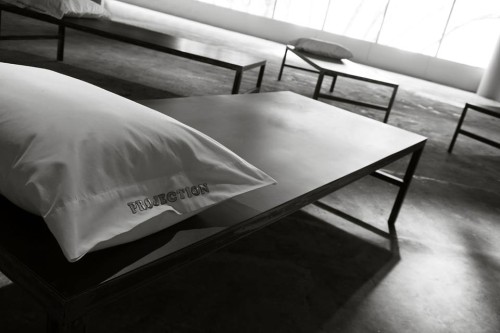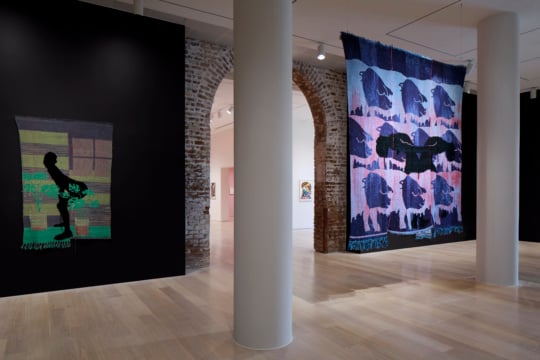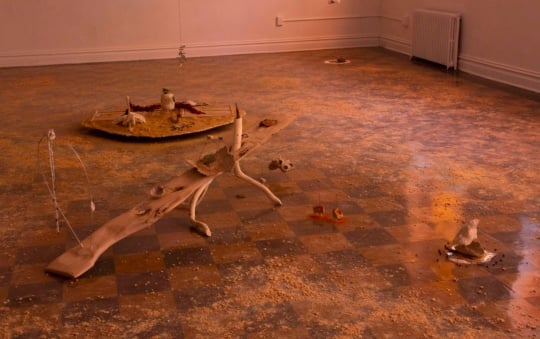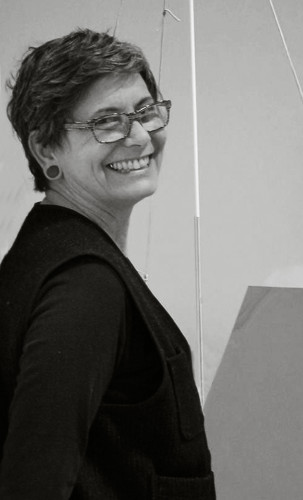
Martha Whittington is a sculptor and educator whose work involves controlled objects and site-specific arrangements. The Southern native has received many awards and grants and has exhibited nationally and internationally. She’s a professor at the Savannah College of Art and Design in Atlanta and has work in MOCA GA’s permanent collection. Over the past few years, her work has been evolving from small pieces of into flawless creations. A force to be reckoned with, Martha is a naturalist who defines minimalism on her own terms.
Whittington has had a busy year—Dashboard Co-op selected her as one of its artists, she will do an Elsewhere Southern Constellations Residency in Greensboro, North Carolina, this summer and has had several solo shows and collaborations. Under the cabana outside her studio, we watch her two dogs and four cats play while discussing the historical evidence materials leave behind, the clash between life and chaos, and how research fuels her inspiration.
Deidre Tyree: I’ve noticed that you’ve been attracted to the same palettes of wood, metal and glass lately. What about those materials are you drawn to?
Martha Whittington: You could call me a minimalist, or a purist I guess, because all my work over the last few years has been stripped down to just the essentials, like the contour of something. But the materials I choose have these memories to them: when you look at it, what memory does it evoke?
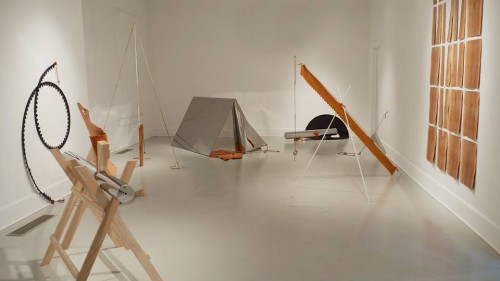
DT: Yeah, maybe it’s all about what or how the material makes you feel, right? Like the emotions, or feelings that come to mind when you touch or smell it?
MW: Certainly if you’re process-oriented like me, the concept isn’t first. So, it becomes all about the material, the ability to manipulate and the countless hours of research on the subject matter. I love to research things! I’ll be working on a new subject and it will remind me of something else. An object in my last work reminded me of a snare [trap], even though I’m totally against any kind of animal entrapment. That led to researching Boy Scout lashing and pioneer construction techniques. Through that research, the concepts for the forms start to develop, then what I see [in my research] really becomes the work.
DT: So, are you trying to make some kind of statement about labor?
MW: No, not at all, although my work over the past few years references labor and industry. It’s not always directly about that, but rather about me and the labor that it takes to produce the work. So, through that, I’m pretty honest in talking about labor because it’s been a laborious effort for me to execute the work. It’s also about experimenting with the ways of making that I’m researching.
DT: Experiments in old techniques seem to not only be a part of your process but also become themes in the work.
MW: Yeah, like how to make a tent. You know, I explored many different types of tents, how to make tent poles and the types of knots and the guidelines to the stakes … I mean, it’s just a lot of research. But regarding the materials, they become an important element to the work. Material is like a storytelller, ike wood or the hide of the cow. If there’s a scar, it’s recorded history. If a tree’s been chopped into, or had a nail in it, we see in the rings that the nail itself is still there. It’s the same with the work. It already has some kind of evidence of a previous purpose.
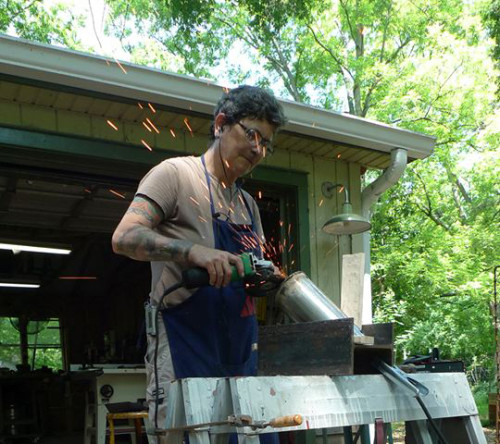
DT: Like being able to have a physical experience with the evidence of a historical event?
MW: Yes! I think that it sets a good tone for some of the work that’s so minimal and precise. Then to bring in natural elements is offsetting. When people see my work, they think that I’m this “neat freak” because it’s so clean and precise. But, you know there’s chaos when I’m working! Through the chaos comes this clarity … the end result. It may be a precisely crafted installation piece, but it emerged from a cesspool of materials, animals, and life’s interruptions. My work is my way of making sense of everything.
DT: It sounds exactly like Mother Nature, in how she creates something around all this chaos. Something is still given life, and the experiences are attached to it. Or even the human life and how things continue to move, cycle, or generate, which you can see on our skin or in our hair. But what about metal, and how does that fit into the chaos?
MW: Well, I can only speak about my most recent use of metal in creating Shift Split for Blackbridge Hall Gallery of Georgia College down in Milledgeville, which was totally a game of reversals. I made tree forms of tubes with notches cut out like you were cutting a tree down, but they were out of mirrored chrome steel instead of wood. The saw blade was made out of cloth instead of metal, and the tent is made of metal instead of cloth. Instead of using wood, making it feel like you’re outside a cozy log cabin, the reflective surface and coldness works with my need for it to be sterile and institutional. In that series, everything is reversed so that it takes on a different type of feeling.
DT: So, the steel cots from Untitled ID at Dashboard Co-op’s “Cosmos” show at Midtown Plaza also speak to this theme of materials recording history and memories because you leave them in their natural state, which allows the viewer to see the process of the making, or the transformation into what it is now.
MW: And the steel can even tell you its life. The type I used is heated on a giant roller as it’s created, and the temperature change shows in the discoloration of the metal. There’s evidence that it was sitting out in a shipyard because of water droplet stains. But, I also like the dullness because it reminds me of a dirty bed!
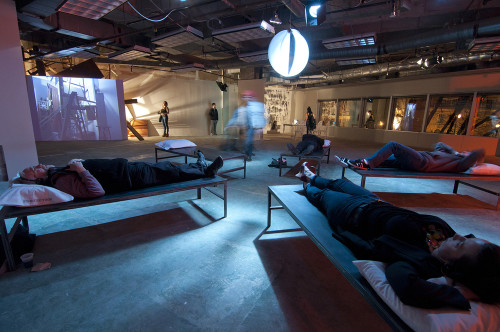
DT: I was actually thinking that too, because up to this point, most of your work has been very pristine and clean. Even the show, Used Air at Whitespec was very much the same, though the theme was about a community of people living in substandard living conditions For Untitled ID, you’ve taken a step further to strip things down even more, keeping it raw and as found.
MW: Exactly! And the pillows on top provide a nice contrast when lying down to listen to the whispers of lucid dream stories. Each bed represents Freud’s categories of Dreams, while the rotating moon above your head shows the passage of time. The individual sound elements in each bed are reminiscent of the work 100 Whispers, which seems like it could be soothing. Yet lying down in front of people without a blanket puts the viewer in a vulnerable position.
DT: Have you thought about other associations with the action of lying on a “cold slab of metal?”
MW: Well, beds are supposed to be safe comfy places, but I wanted the viewer to have mixed feelings while lying there. Initially, I was going for a standard cot size typical of a military cot to keep things simple and generic, but now that you mention it … yes, it’s like a morgue table, a prison bench, or prison bed!
Deidra Tyree is an Atlanta artist and freelance writer.
